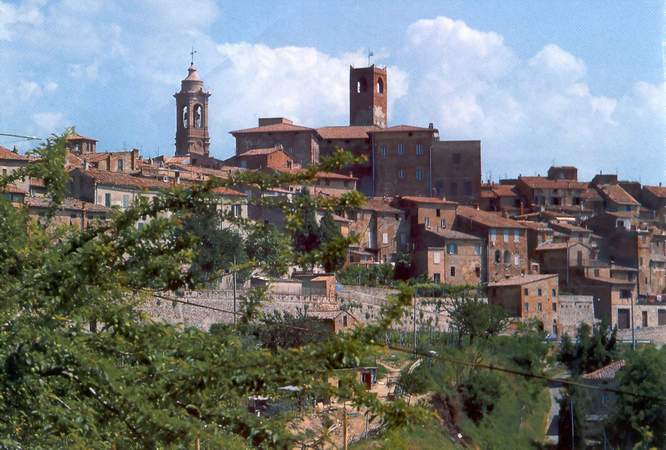MORGANTE - A MEDICI FAVOURITE DWARF RIDES A TORTOISE
It's back to Florence for this month's object and I'm reminded of it today by a fridge magnet I'm examining which I bought last time we were in the city. We'd been on a special tour of the Vasari corridor built in the middle of the 16th century for Cosimo de Medici which links, as it always has done, the Uffizi with the Pitti Palace on the other side of the River Arno. Almost half a mile in length and passing over the top of the shops surmounting the Ponte Vecchio, this intriguing private corridor today houses a significant collection of portraits of dignitaries and celebrities from times gone by. At the end of the tour the exit leads to a corner of the renowned Boboli Gardens and a just a few yards away from the door is the sculpture which is the subject of this months blog posting. There are dozens of statues in the various areas of the beautiful Boboli, but this is perhaps the strangest of them all and it causes quite a stir with the tourist visitors who come to this part of the gardens.
.
The statue is in fact part of a fountain entitled "Fontana del Bacchino" which is made up of an oval shaped cistern sitting in front of a square pedestal which in turn is surmounted by a giant tortoise on top of which sits the figure of Morgante - the court dwarf of Cosimo I Medici. It was sculpted by Valerio Cigoli and completed in 1560. Many of the visitors who view it today are repulsed by the life like depiction of the nude, male dwarf figure and its non politically correct subject matter; when they discover a little more about it, this does little to endear it to them. Today we know that extreme short stature in humans (achondroplasia) is caused by a genetic mutation resulting in an irreversible imbalance of growth hormones during development and generally speaking individuals suffering from it now don't suffer the indignities they were forced to endure in earlier times. The statue in the Boboli of Morgante, however, fascinates many viewers and I was certainly one of those when I saw it. I knew that as soon as I got home it would be out with the books and a thorough search of the internet to find out more about this famous character.
Dwarves were a common occurrence at many European courts in the 16th century. They were considered to be curiosities of nature and as "possessions" of monarchs and Dukes they were often listed in inventories along with expensive items of jewellery, textiles and clothing. As symbols of wealth and power they were expected, in jester fashion, to amuse and entertain members of court and provide companionship to their owners. A series of 16th century art works by Johann Stradanus, engraved by Phillip Galle shows various scenes from the Coronation of Cosimo I Medici as Grand Duke of Tuscany and the examples shown below indicated the Duke had several dwarves attend him at the ceremony.
 |
| Scenes from the Coronation of Cosimo I Medici by Johann Stradanus |
 |
| Nano Morgante riding a dragon by Giambologna (1529-1608) Roof garden of the Loggia dei Lanze, Florence |
 |
| Nano Morgante in a painting by Bronzino |
Like many of Bronzino's other paintings (Venus and Cupid in London's National Gallery comes to mind) there are issues in the picture for contemplation and here the artist is, according to some art historians, playing with the idea of the merits of painting versus the "nobility" of sculpture. Showing both front and reverse views of the subject and the beginning and end of the bird hunt at the same time Bronzino appears to be commenting on the inherent flexibility of painting as a medium.
To finish off by returning to the sculpture in the Boboli Gardens - (which interestingly and for obvious reasons which I forgot to mention, is a copy of the original work) - Morgante astride the tortoise is an ironic comment on the notion of the classical equestrian statue of the glorious victor on horseback. How many of those are looked at and ignored these days?
So - like it or not - this month's object tells us a lot - not only about aristocratic artistic tastes in mid 16th century Florence, but also in providing an unusual insight in to an aspect of Medici court life which is intriguing even if we might find it unpalatable today. Fascinating!! - I don't regret showing off my non PC fridge magnet at all - in fact its one of my favourites.
CIAO & KBO
IAN
Read my blog on an ongoing basis and sign up for alerts. There's a new Object in Focus every month and other items of interest in between. Postings began with the purchase of our apartment in Umbria in January 2014. Cheers, Ian.





